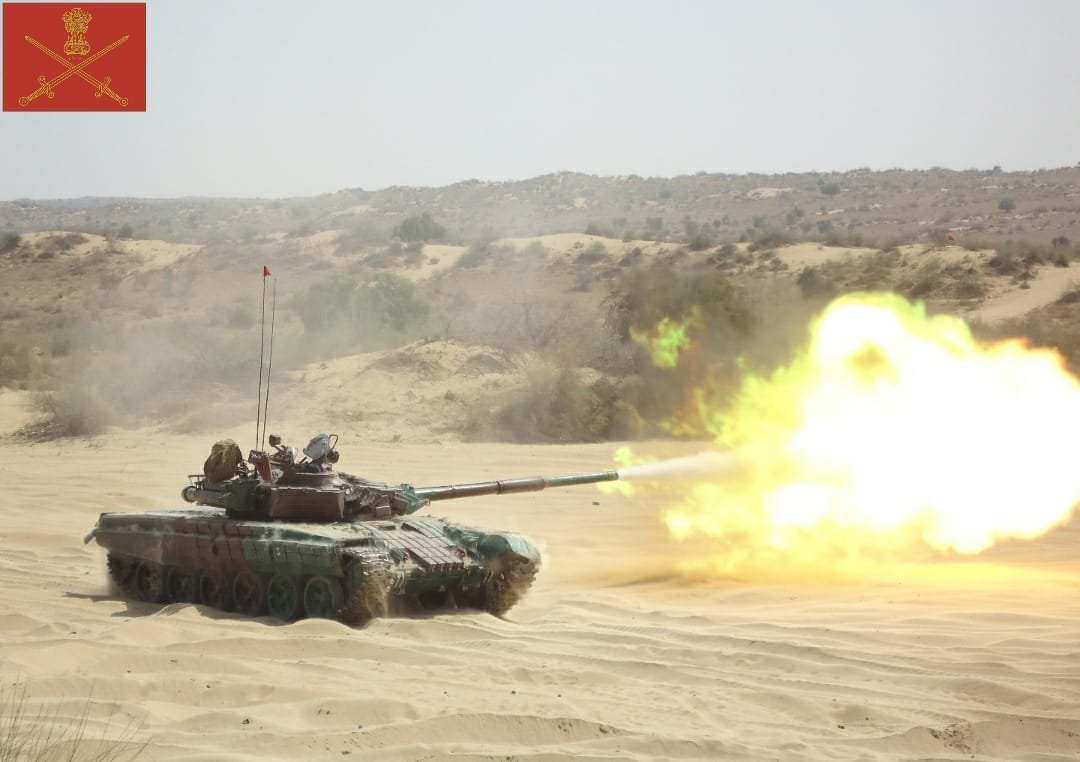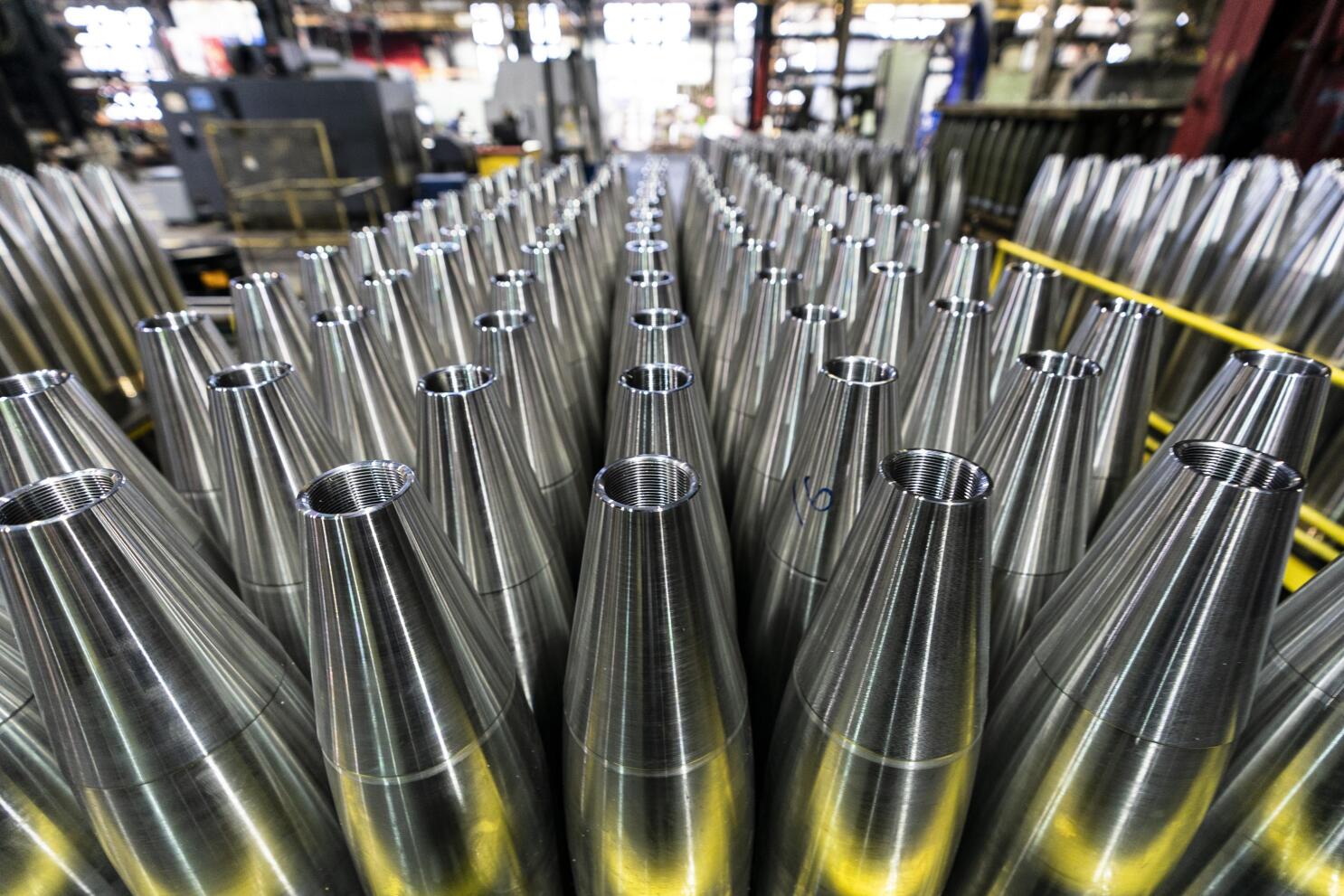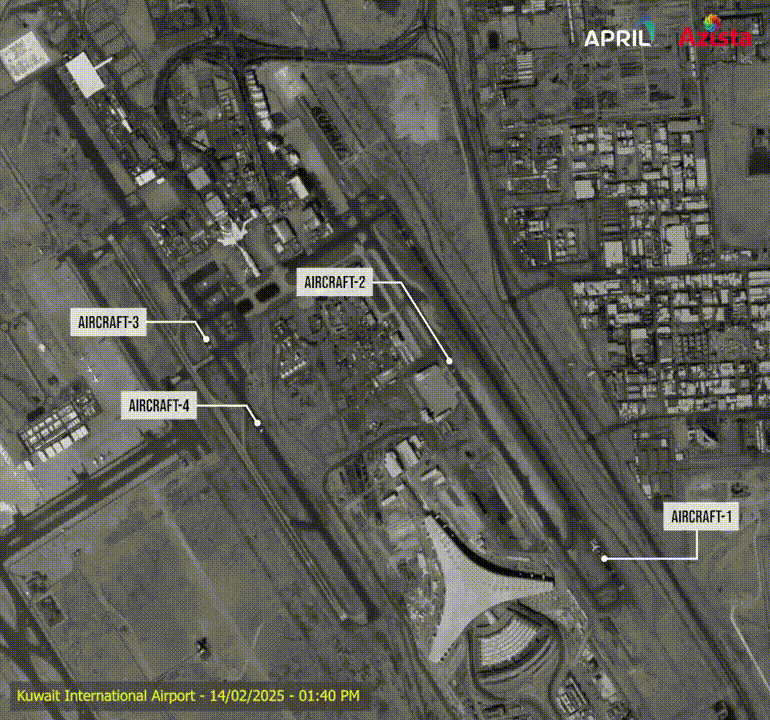AFI
SOURCE: AFI


The Indian Air Force (IAF) faces a critical juncture as over 100 HAL HJT-16 Kiran jet trainers, operational for over five decades, are slated for retirement by 2027. These “Ray of Light” aircraft, introduced in 1968, have been the backbone of Stage-II pilot training for the IAF and Indian Navy, bridging basic training on Pilatus PC-7s to advanced training on BAE Hawks.
With no viable import option available, the indigenously developed HJT-36 Yashas, unveiled at Aero India 2025, is poised to replace the Kirans. However, delays in its induction raise concerns about a potential training gap, as India’s self-reliance ambitions confront the risk of “self-created emergency conditions,” .
Continue readingSOURCE: AFI


In a groundbreaking development for India’s defence sector, the JCBL Group, through its defence arm Airbornics Defence & Space Pvt Ltd (ADSL), has signed India’s first-ever defence Memorandum of Understanding (MoU) with Slovakia. Formalized during President Droupadi Murmu’s state visit to Slovakia in August 2024, this landmark agreement, announced on April 15, 2025, positions JCBL as a key player in co-developing advanced technologies for light tanks, Future Ready Combat Vehicles (FRCVs), and Futuristic Infantry Combat Vehicles (FICVs).
Additionally, the partnership opens the door for JCBL to offer the cutting-edge Eva-M2 6×6 self-propelled howitzer, a globally unique artillery system, for the Indian Army’s Mounted Gun System (MGS) tender.
Continue readingSOURCE: AFI


The Defence Research and Development Organisation (DRDO) of India has embarked on a transformative journey to develop advanced magnetic materials for strategic applications, as outlined in a detailed roadmap presented by its Naval Science and Technological Laboratory (NSTL) in Visakhapatnam. This initiative, spanning short, medium, and long-term goals from 2015 to 2035, aims to bolster India’s self-reliance in defence technologies by creating cutting-edge magnetic materials for motors, sensors, shielding, and future nano-composite devices.
Highlighted in a graphic shared on X in April 2025, DRDO’s efforts underscore a strategic push to reduce dependency on rare earth elements, enhance electromagnetic performance, and pave the way for next-generation defence systems. This article explores DRDO’s roadmap, its implications for India’s military aviation and naval sectors, and the challenges ahead.
Continue readingSOURCE: AFI


In the global race for air superiority, Russia has often been a formidable contender, with its storied design bureaus like MiG and Sukhoi shaping aviation history. While the world’s attention today fixates on the United States’ Next Generation Air Dominance (NGAD), China’s tailless prototypes, and Europe’s collaborative Tempest and FCAS programs, a lesser-known chapter in Russia’s aerospace saga deserves a spotlight. Years ago, Russia’s Mikoyan-Gurevich (MiG) design bureau unveiled a bold 6th-generation fighter concept—a sleek, blended wing body (BWB) design with no vertical tails, featuring 2D thrust vector control (TVC) and a radar cross-section (RCS) test model.
This audacious vision, which briefly positioned Russia ahead of its peers, has since faded into obscurity, starved of funding and overshadowed by other priorities. Could renewed investment revive MiG’s dormant dream and restore Russia’s edge in next-generation air combat?
Continue readingSOURCE: AFI


Recent satellite imagery from INS Rajali, the Indian Navy’s premier naval air station in Arakkonam, Tamil Nadu, has revealed a poignant sight: the decommissioned Tupolev Tu-142M long-range maritime patrol aircraft, once the backbone of India’s anti-submarine warfare capabilities, parked in a forest clearing far from the main runway. This positioning, away from active operational areas or public display zones, suggests that the Navy has no immediate plans to relocate these iconic giants to museums, parks, or other visitor-accessible sites, leaving their future uncertain.
The Tu-142M, affectionately nicknamed the “Albatross,” served the Indian Navy for 29 years, from 1988 to 2017, logging an impressive 30,000 accident-free flying hours. Inducted into the Indian Naval Air Squadron (INAS) 312 at INS Hansa, Goa, and later based at INS Rajali from 1992, the Soviet-era aircraft were renowned for their long-range maritime reconnaissance and anti-submarine warfare capabilities. With a 50-meter wingspan, a combat radius of 6,500 km, and a top speed of 850 kmph, the Tu-142M was the world’s fastest turboprop aircraft, earning a fearsome reputation in operations like Operation Cactus in the Maldives (1988), Op Vijay (1998), Op Parakram (2002), and anti-piracy missions from 2011 onward.
Continue readingSOURCE: AFI


India’s defense landscape is undergoing a seismic shift, with the private sector emerging as a formidable force, challenging the long-standing dominance of Public Sector Undertakings (PSUs). While this rise signals a vibrant, innovative ecosystem, it has come at a cost for PSUs like Hindustan Aeronautics Limited (HAL), Bharat Electronics Limited (BEL), and others: a significant loss of key talent to private defense firms. Companies such as Tata Advanced Systems, Larsen & Toubro (L&T), and Adani Defence are luring skilled engineers, scientists, and executives with lucrative opportunities, raising concerns about the PSUs’ ability to retain expertise critical for India’s self-reliance in defense.
The Indian private defense sector has grown exponentially, driven by government initiatives like Make in India and the 2020 defense reforms, which opened doors for private players to bid on high-value contracts and collaborate with global giants. In 2024 alone, private firms secured orders worth over ?50,000 crore, including projects for artillery guns, drones, and missile systems. Companies like L&T have delivered advanced systems such as the K9 Vajra howitzer, while Tata’s partnership with Airbus for C-295 aircraft production showcases the sector’s technical prowess. This growth has created a demand for specialized talent, and private firms are capitalizing on their agility and resources to attract the best minds.
Continue readingSOURCE: AFI


India’s military aviation sector stands at a critical juncture, grappling with inefficiencies that threaten its ability to deliver cutting-edge capabilities to the armed forces. As global warfare evolves—evidenced by the transformative use of unmanned aerial vehicles (UAVs) in conflicts like Armenia-Azerbaijan and Russia-Ukraine—the Indian Air Force (IAF) remains the nation’s primary deterrent, reliant on Hindustan Aeronautics Limited (HAL) as its main equipper.
Yet, a fragmented ecosystem of overlapping government agencies, redundant projects, and organizational bloat hampers progress toward self-reliance. A time-bound review and rationalization of these entities, as argued by retired Air Vice Marshal Manmohan Bahadur in a recent opinion piece, is essential to ensure a focused path to indigenous excellence. This article explores the challenges and proposes a roadmap for reform, drawing on the need for efficiency, accountability, and strategic vision.
Continue readingSOURCE: AFI


For the fiscal year 2024-25, the Pakistan Air Force (PAF) has been allocated approximately 21.3% of the nation’s total defense budget, amounting to roughly $1.62 billion USD. This figure, while significant, raises eyebrows when juxtaposed against the PAF’s ambitious procurement plans: the acquisition of 40 J-35A stealth fighter jets from China, estimated at $70 million per unit, and participation in Turkey’s KAAN fifth-generation fighter jet program, with each unit carrying a hefty price tag of over $100 million, potentially climbing to $110 million.
The math doesn’t quite add up—purchasing 40 J-35As alone would cost $2.8 billion, far exceeding the PAF’s allocated budget, let alone adding the KAAN’s astronomical costs. So how does a cash-strapped nation like Pakistan, often teetering on the edge of economic collapse, fund such extravagant military upgrades? The answer lies in the Pakistani military’s shadowy financial ecosystem, where official budgets are just the tip of the iceberg, supplemented by a web of unconventional revenue streams ranging from legitimate commercial ventures to illicit black-market dealings.
Continue readingSOURCE: AFI


In a significant step toward deepening bilateral ties, Indian Defence Secretary Rajesh Kumar Singh is visiting Rome to advance strategic cooperation with Italy. The visit, which underscores the growing India-Italy Strategic Partnership, focuses on enhancing defence collaboration, maritime security, and industrial ties, with both nations exploring opportunities for joint weapons system development. This development aligns with India’s vision of self-reliance in defence manufacturing under the “Make in India” initiative and Italy’s ambition to strengthen its role as a key player in the Indo-Mediterranean geopolitical corridor.
On April 14, 2025, Rajesh Kumar Singh met with Italian Defence Minister Guido Crosetto in Rome, engaging in productive discussions to bolster defence cooperation. The talks emphasized the importance of the Indo-Mediterranean region as a vital link between Europe and the Indo-Pacific, where stability is critical for global security. According to sources, both sides expressed a keen interest in co-developing advanced weapons systems, leveraging their complementary industrial and technological capabilities.
Continue readingSOURCE: AFI


French aerospace giant Dassault Aviation has set its sights on establishing a state-of-the-art Maintenance, Repair, and Overhaul (MRO) facility and a Centre of Excellence near the upcoming Noida International Airport in Jewar, Uttar Pradesh. The proposal, announced on April 15, 2025, by the Yamuna Expressway Industrial Development Authority (Yeida), marks a significant step in strengthening India’s aerospace ecosystem and deepening India-France defense ties. The initiative, which includes plans for a skill development university in collaboration with India’s Ministries of Skill Development and Defence, aligns with the “Make in India” vision and positions Uttar Pradesh as a burgeoning hub for aviation innovation.
Dassault Aviation, renowned for its Rafale and Mirage 2000 fighter jets operated by the Indian Air Force (IAF), has expressed interest in setting up a dual-purpose MRO facility to service both civil and military aircraft. The facility will be located within a 1,365-hectare aviation hub designated under the second phase of the Noida International Airport project, slated to become operational by July 2025. Yeida CEO Arun Vir Singh, who also heads Noida International Airport Limited (NIAL), confirmed that discussions with Dassault are underway to finalize land requirements, with talks focusing on creating a comprehensive aerospace ecosystem.
Continue readingSOURCE: AFI


The Ordnance Depot at Avadi, under the aegis of the Indian Army’s Southern Command (@IaSouthern) and Dakshin Bharat Area (DBArea), has dispatched a batch of indigenously built Mahindra Light Specialist Vehicles (LSVs) for deployment with the Northern Command. These rugged, modular, and versatile vehicles, assembled at Avadi from kits supplied by Mahindra Defence Systems Limited (MDSL), are optimized for rapid field operations across diverse and harsh terrains, enhancing the Indian Army’s tactical mobility in challenging environments like Jammu and Kashmir and Ladakh.
This milestone underscores Avadi’s critical role in India’s defense logistics and the success of the Aatmanirbhar Bharat initiative in delivering homegrown solutions for national security.
Continue readingSOURCE: AFI


In a significant boost to the Indian Army’s armored capabilities, Vehicle Factory Jabalpur (VFJ), a key unit of Armoured Vehicles Nigam Limited (AVNL), has embarked on a critical mission to overhaul the Army’s fleet of T-72 tanks. The first T-72 tank was delivered to VFJ’s facility in Jabalpur on March 21, 2025, marking the start of a comprehensive refurbishment program aimed at extending the operational life of these battle-proven main battle tanks (MBTs). This initiative underscores VFJ’s pivotal role in India’s defense manufacturing ecosystem and aligns with the “Aatmanirbhar Bharat” vision of self-reliance in military modernization.
The T-72, a Soviet-designed MBT inducted into the Indian Army in the late 1970s, remains a cornerstone of India’s armored formations, with approximately 1,700 units in service alongside the more advanced T-90S Bhishma. Known for its reliability, mobility, and firepower, the T-72 has been a workhorse in India’s defense strategy, particularly along the western and northern borders. However, decades of operational use in diverse terrains, from the deserts of Rajasthan to the high-altitude regions of Ladakh, have necessitated extensive upgrades to maintain its combat effectiveness.
Continue readingSOURCE: AFI


Sunita Tools Limited, a rising star in India’s defense manufacturing sector, has achieved a significant milestone with the receipt of a Major Letter of Intent (LOI) on March 21, 2025, for the supply of 100,000 empty 155mm M107 artillery shells. Valued between ?200-300 crore ($23-35 million), this order from a prominent defense supplier in a neutral and friendly Far Eastern country marks a pivotal moment for the Mumbai-based company, reinforcing its growing stature in the global defense supply chain. The contract not only underscores Sunita Tools’ technical prowess but also aligns with India’s ambitious goal of achieving $5 billion in defense exports by 2025, driven by the “Make in India” initiative.
The LOI, issued by a well-established defense supplier backed by the Ministry of Defence (MoD) of the Far Eastern nation, stipulates the delivery of 100,000 empty 155mm M107 artillery shells at a rate of 7,500 pieces per month, with the entire order to be fulfilled within 14 months. The 155mm M107 shell, a NATO-standard projectile, is a versatile and widely used munition compatible with various howitzers, including the Indian Army’s Dhanush, DRDO ATAGS, and K9 Vajra systems. Its global demand has surged amid ongoing conflicts and military modernization efforts, making this contract a strategic win for Sunita Tools.
Continue readingSOURCE: AFI


On April 16, 2025, Pakistan’s Army Chief, General Asim Munir, delivered a vitriolic speech at the Overseas Pakistanis Convention in Islamabad that laid bare the foundational ideology of Pakistan: an unapologetic rejection of Hindu identity, both religious and cultural. In a sweeping diatribe, Munir declared, “Our forefathers thought we were different from Hindus in every possible aspect of life. Our religion is different, our customs are different, our traditions are different, our thoughts are different, our ambitions are different. That’s where the foundation of the two-nation theory was laid.
We are two nations, we are not one nation.” This stark pronouncement from Pakistan’s most powerful figure not only reignited the divisive two-nation theory but also demolished the oft-repeated clichés peddled by India’s self-styled defense analysts and the so-called ‘Aman ki Asha’ cabal, who naively champion the idea that a “stable Pakistan” serves India’s interests.
Continue readingSOURCE: AFI


Azista BST Aerospace Pvt. Ltd. (ABA), a pioneering Indo-German joint venture between Azista Industries Pvt. Ltd. and Berlin Space Technologies GmbH, has achieved a significant milestone in satellite technology. On April 16, 2025, the company announced a groundbreaking feat: its ABA First Runner (AFR) satellite, operating in a sun-synchronous orbit at approximately 7 km/s, successfully captured video footage of an aircraft taking off from Kuwait Airport. This achievement underscores the convergence of aviation and advanced imaging technology, challenging conventional limits of satellite capabilities.
The AFR satellite, launched in June 2023 aboard SpaceX’s Falcon 9 Transporter-8 mission, is an 80 kg remote sensing satellite built on a modular bus platform. Designed as a technology demonstrator, it features a wide-swath optical payload with panchromatic and multispectral imaging capabilities, delivering resolutions of 1.5 meters (panchromatic) and 5 meters (multispectral) from an altitude of approximately 500 km. Its ability to record video from such a high-speed orbit—traveling at 7 km/s (about 25,200 km/h)—marks a leap forward in Earth observation technology.
Continue reading